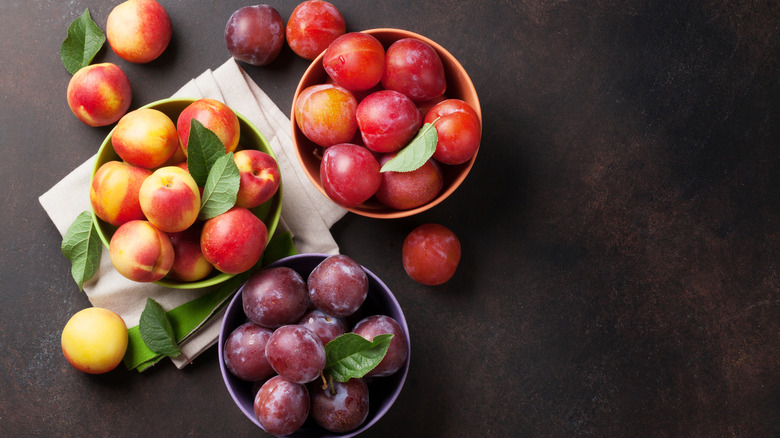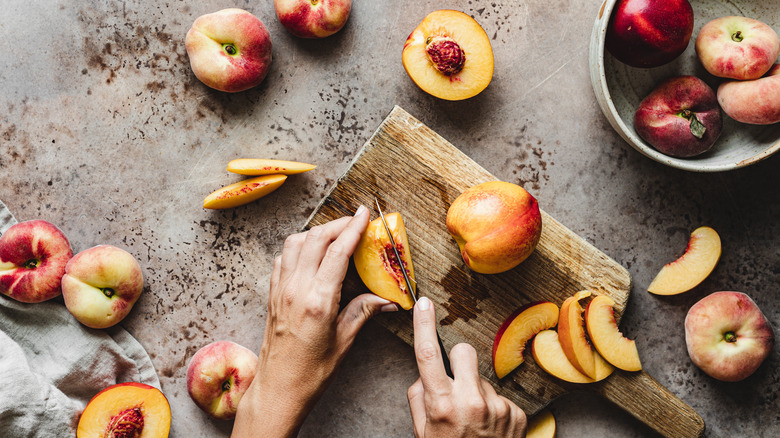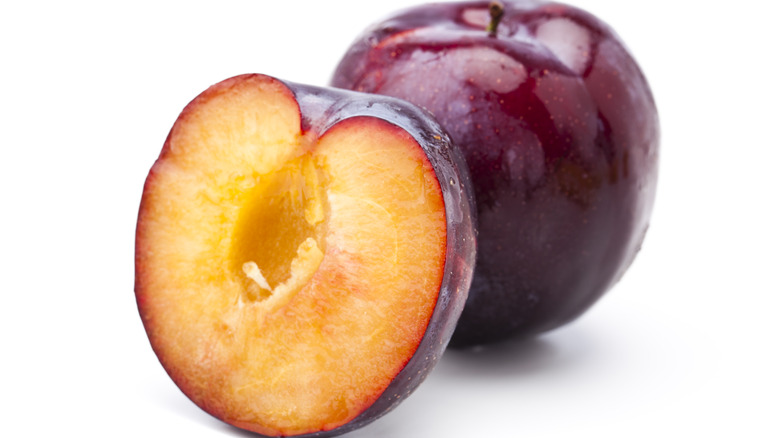There's A More Efficient Way To Cut Stone Fruit
Stone fruit season is one of the best times of the year to find juicy, pitted treasures like peaches, fresh apricots, and ripe cherries at grocery stores and farmers markets, typically spanning from late May to early October. Once you get your bounty and bring it home, there's all kinds of ways to enjoy the fresh picks. Biting straight into these sweet pearls can be a real treat, but sometimes if you don't want the mess, or need to cut up the fruit to serve in a dish or recipe, there are best practices for prepping them.
The next time you chop up your stone fruit, and want to use the best methods for pulling the edible parts away from the hard seed in the center, it's imperative to cut down the middle of the fruit and not top to bottom, which is often the instinct since the fruit usually has natural vertical lines. But, cutting across the exterior of the fruit with a knife will ensure that any pit that clings to the flesh — in addition to cherries and peaches, think mangoes, nectarines, plums, and pluots — will be easily removable.
The trick to slicing stone fruits with large pits
Before you even get started cutting into the stone fruit, make sure your produce is ripe. There should be the slightest bit of give when you press down gently near the stem. Once that's been confirmed, then it's time to use these tips to make the most of your fresh picks without laboring over the prep work.
When chopping up stone fruits like peaches that have a large seed in the middle, you'll want to carve horizontally across the fruit using a serrated knife. Cutting across the center provides greater access to the pit, and using a serrated knife will ensure the hard stone in the middle doesn't dull your best chef's or paring knife.
Then, you can wiggle the top and bottom fruit halves apart, and set the one without the seed to the side. With the remaining pitted piece, take your knife and cut the fruit once more in half, again focusing on slicing through the equator. With the pit even more revealed, you can pry it right out and enjoy your ready-to-eat slices.
How to slice and prep softer stone fruits
But, not all stone fruits have a huge seed in the middle and require other best practices. Some types, like plums, tend to be much softer. To best slice plums, halve them in the same way you would a peach, then place them pit-side down. Next, carefully cut lengthwise around the seed and gently pull the flesh away, trying your best to keep it in one piece.
Mangoes are another tricky stone fruit. The best way to peel and eat a mango starts by holding it stem up and carving a ¼-inch from the center on both sides. Because mangoes have a pit that's thinner than peaches and plums, the closer you get to the inside, you may need some extra help. One option is to use a peeler to free the flesh from the seed.
Once you've separated a stone fruit from its seed, there are so many ways to incorporate sweet cherries, peaches, and more into your favorite dishes. One delicious option is a stone fruit crumble that just requires cooking peaches or plums in butter before topping them with an oat, walnut, and cinnamon mixture and baking in the oven. Cherry turnovers are another great pick, perfect for breakfast or dessert. For a more savory take, you could plate a tomato and peach salad with goat cheese, and if you have any leftover pieces (or fruit that's about to expire), whip up some jam and preserve the mix for bread and bagels.



